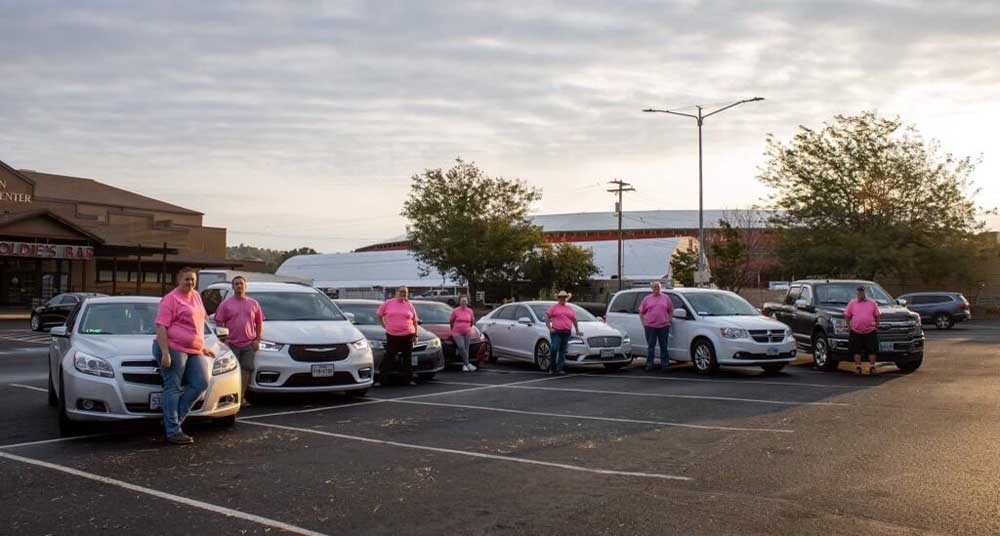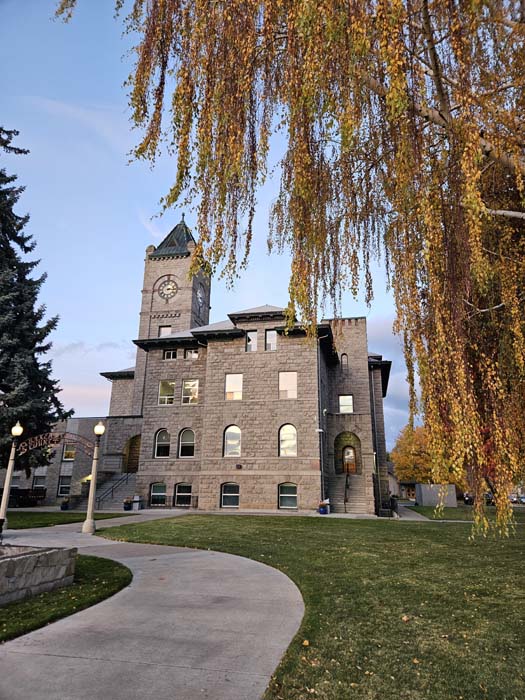Army says audit not the whole story
Published 4:29 am Friday, June 8, 2001
HERMISTON – The recent release of a federal audit of the chemical demilitarization program has sparked increased criticism by opponents and has program insiders disputing the news.
An August audit, conducted by the U.S. Army Audit Agency, decries the Army’s exponential cost increases and schedule delays to the program, Salt Lake City’s Deseret News reported Wednesday. The program manages the Umatilla Chemical Depot west of Hermiston.
Army officials said the article is misleading. While the cost of the program has indeed jumped from $1.7 billion to $15 billion, as the audit states, it doesn’t note that the original figure was estimated before the Army had decided how to destroy the nation’s 30,000 tons of chemical weapons. Incineration, the method chosen for Oregon, has also been selected for the majority of the nation’s chemical weapons storage sites.
“Our original estimates were incredibly optimistic and understated,” said Marilyn Daughdrill, an Army spokeswoman at a facility in Maryland.
Conrad Whyne, the deputy project manager for chemical stockpile disposal, noted that much has been added to the program since then, especially the Chemical Stockpile Emergency Preparedness Program, which provides items to keep people safe during a possible accident at a weapons site. Also adding to cost spikes were increased environmental regulations and inflation.
The original chemical demilitarization plan, in 1985, was to have all destruction facilities built and operated simultaneously. This has not been the case: Oregon’s facility and a sister plant in Alabama, will have ribbon cuttings in August and today, respectively.
Meanwhile, a facility in Utah has been operating for more than four years and another in the Pacific Ocean already completed its 10-year job. Other facilities are waiting to be constructed.
Whyne added that the criticism also is unfair because the program wasn’t given sufficient money to build several demilitarization plants at the same time, and the audit didn’t look at any data more recent than 1998.
Among the audit’s points:
* 108 change proposals included in a contract revision for the Umatilla plant were estimated to cost $1.3 million total. Auditors said they actually cost about $11 million.
* Army investigators wrote that managers approved more than 3,000 design changes at various plants but didn’t assess the required cost, schedule, environmental and operational effects.
* About 46 percent of the proposals were approved without a full explanation of the need for the change, the anticipated benefits from making the change, or the effects of not making the change.
The dunn isn’t done
The report from the Audit Agency also criticizes the lack of a dunnage incinerator in Oregon. Dunnage includes pallets that the weapons have been stored on and the plastic suits workers will wear inside the facility.
The “dunn,” as it is known, would be the fifth furnace built here if ever constructed, as the state permit requires. The two existing incinerator complexes have dunnage furnaces, but neither uses them. Whyne said the dunn was inefficient because it had to be able to destroy all kinds of waste; the other four handle specific types of waste.
The Army will begin testing a process called “carbon micronization” this fall at Johnston Atoll, 800 miles southwest of Hawaii. The facility completed the incineration of its 2,000 tons of chemical weapons late last year, but now it must do the cleanup work such as destroying dunnage material. Whyne said the month-long test will begin in October and may take six months for a report to get through the Environmental Protection Agency (EPA).
The Oregon Department of Environmental Quality said the tests “look very promising,” but until the results are in, the dunn will remain a requirement. Incineration cannot begin until a method of destroying secondary waste is determined.
“We have a need for that to happen as soon as possible for Umatilla,” said DEQ Program Administrator Wayne Thomas. Incineration in Oregon is scheduled to begin in July 2002.
A DEQ specialist is currently working with EPA staff to inspect the upcoming carbon test. The testing may take time, but Whyne noted that the EPA has approved several permit changes before completing a report.
For example, approval from the EPA to destroy suits in the metal parts of the furnace was given before the report was even written because the test was overwhelmingly positive, Whyne said.
Environmental concerns
The audit didn’t see it so positive, noting that the program managers repeatedly wrote, “There may be an impact (from design changes). Environmental documentation will be corrected as required.”
The Army auditors slammed the managers; “Use of such canned wording clearly indicates that managers weren’t concerned with whether changes complied with environmental permits or the potential effects of modifying existing permits until after they were approved.”
Whyne said the program is legally bound to consider public safety beyond all other considerations.
“Cost and schedule was not always as important as safety … in this program,” Whyne said.
Craig Williams, head of the Kentucky-based anti-incineration Chemical Weapons Working Group, called this another example of the chemical demilitarization program’s mismanagement.
“To be making the number of changes cited in the report without consideration of the environmental consequences is typical of the way this program is managed,” Williams said. “Perhaps worse is this level of ‘on the fly’ design changes without assessing the ‘operational effects’ … How can you justify changing designs without knowing the impacts on operations and claim the process is safe?”
The DEQ said Oregon is safe because it has a unique process of environmental review for all changes requested by the facility’s engineers. The changes are then inspected by a third-party engineering firm.
Lessons learned
Other criticism, such as more than 3,000 design changes to various plants is a matter of perspective. Whyne says the changes are a sign that engineers have learned how to improve incinerators during the last 10 years, a point echoed by Oregon’s Wayne Thomas.
“You don’t build a facility of this complexity without a need for change,” Thomas said.
Some of the changes may be as small as moving a pipe across a room, while others require permit modifications. The Umatilla site has received more than 100 permit modifications, all of which require time for the DEQ to inspect.
Recently, senators from Alabama and Kentucky have called for reviews of the program, stating concerns about the management of the demilitarization program. Whyne noticed that such demands add to the cost because they slow the destruction program, which he said was sadly ironic because his program is being criticized for cost overruns.
“The costs keep accruing on what we’re doing whether we’re moving forward or not,” he said.
But despite the criticism of both the audit and the article, the DEQ and the Army said they believe progress is being made in the right direction, particularly with the carbon micronization tests.
“We’re confident we’re going down a path that will be successful and the state of Oregon will get to see the data when it becomes available,” Whyne said.





